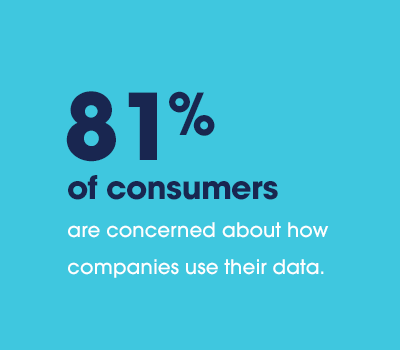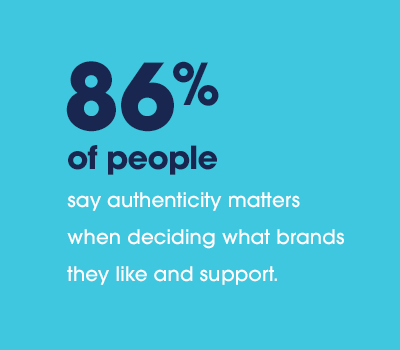Why Your Segmentation Strategy is Costing You Money

Consumers crave a genuine connection with the companies they shop with. In fact, 91% of consumers report they are more likely to shop with brands that provide relevant offers, which is why marketers provide them. But there’s a problem: using traditional segmentation strategies to deliver personalized marketing is failing.
Consumers don’t like the insidious approaches brands are using to reach them. Research shows that only 6% of consumers want brands to use their social media activity to determine their interest in a personalized offer. And when brands send their messages, consumers resist: StopAd says 70% of their users block an average of 200 ads a day on Windows devices alone.
devices alone.
Brands looking to rebuild digital trust are turning to a new, highly effective form of personalization that lets customers choose when and how to engage. This approach has many rewards, including one of the hardest to create: offers that go viral.
How Current Segmentation Strategies Fall Short
Today’s most common segmentation strategies have one fatal flaw: members of a segment don’t know who else is in their group, so when they receive personalized marketing, it ends at their doorstep.
For example, most customers of AT&T don’t know everyone else who uses the carrier. When these customers receive a personalized offer, they can’t spread the word in a way that would help the brand. This severely limits the offer’s potential reach.
Each specific segmentation strategy also has its own limitations:
Demographic Segmentation
This approach relies on attributes like gender, age, and zip code, which can be easy and inexpensive to gather. But prospects on the list aren’t necessarily qualified, and the intent signal to buy is weak. Thus, conversions are low.
Behavioral Marketing
Using third-party data from Facebook and data management platforms (DMPs) can offer greater consumer insight. But this information is unverified and based on a brief, temporal snapshot of shopper behavior, so it doesn’t provide lasting insight into a customer’s interest or intent.
Behavioral marketing is also expensive, and it relies on unethical data collection that erodes customer trust. Data privacy is a growing concern—81% of consumers are concerned about how companies use their data, and 79% of US adults use at least one tool to protect their online privacy and security.

Customer Data Platform (CDPs)
This first-party data collection method resolves shoppers’ worries over data privacy. A brand can confidently send personalized offers, such as discounts to customers who haven’t made a purchase within the past 90 days. However, CDPs offer little to no information on prospects.
Also, setting up and maintaining CDPs and related systems is expensive, which is one reason customer acquisition costs have risen nearly 50% in the past five years.
Multiply the Power of Personalization with Identity Marketing
Identity marketing, a new form of personalization, removes the limitations of traditional segmentation strategies. Instead of targeting groups of people who share an attribute but don’t know each other, brands can send personalized offers to customers tribes.
Consumer tribes share identity-based attributes, such as their life stage (students, seniors), occupation (teachers), or affiliation (the military community). More importantly, members of consumer tribes are socially connected, which greatly enhances sharing. For example:
- 83% of Gen Z would share a personalized offer with their friends.
- 96% of the military would share a personalized offer with others in the military community.
- 71% of teachers who receive a personalized offer would tell a colleague.
Here’s how identity marketing works:
- A company creates a personalized offer for a consumer tribe that aligns with its brand and invites prospects to take advantage of it through whatever channels the company normally uses.
- Consumers opt-in to redeem the offer and are digitally verified to ensure the offer’s integrity and prevent discount abuse.
- Brands use this zero-party data to nurture ongoing customer loyalty.
How Identity Marketing Helps Brands Thrive
Brands like Lowe’s, T-Mobile, and YouTube have reaped the benefits of identity marketing, including:
Strong Word-of-Mouth Marketing
Customer tribes are far more deeply connected than generic segments or groups that are based on similar purchases. They have strong networks that love to support each other. Nearly 80% of teachers hear about gated, personalized offers from other teachers, and 76% of military members learn about discounts through word of mouth.
Deep Connections with Customers
Personalized offers to consumer tribes elicit a strong emotional response because they trigger a powerful sense of belonging to a group. This creates meaningful brand relationships in a way that other approaches can’t. According to Forrester’s 2018 Customer Experience Index, the way an experience makes customers feel influences brand loyalty more than any other factor.
Privacy-Friendly Engagement
Identity marketing is consent-based and aligns with laws like CCPA. Brands can continue nurturing customers in a relationship based on trust. This trust is the cornerstone of effective personalization.
A Halo Effect That Expands Success
Supporting a tribe’s values facilitates positive brand awareness and authenticity among all consumers. In fact, 86% of people say authenticity matters when deciding what brands they like and support.

Access to Large and Lucrative Audiences
Marketers can target high-value consumers like students, teachers, and the military who are likely to be repeat purchasers. These customer tribes have tremendous purchasing power:
- The US military has 37 million members and $1 trillion to spend.
- The US has nearly four million teachers who spend $1.7 billion of their own money on school supplies alone.
- Globally, there are 235 million college students. US students have more than $574 billion in spending power.
- In the US, 109 million seniors have $3.2 trillion.
- The nearly four million nurses in the US are well-paid: The average salary for an RN is $74,000, and in some states nears, or is above, six figures.
Brands that adopt identity marketing grow revenue, improve efficiency, and reduce costs. Purple, the innovative mattress start-up, increased its conversion rate by 6x, saved 49 customer service hours each month, and generated an ROAS of 25:1.
And when Globus, an international travel company, created a military offer to increase bookings for its tours, their program outperformed other flash sales by 20%, reduced discount abuse by 35%, and took 75% less effort and resources to implement.
Current methods of personalization serve a purpose, but identity marketing fills a place none of them can.
Read our e-book: The Definitive Guide to Identity Marketing